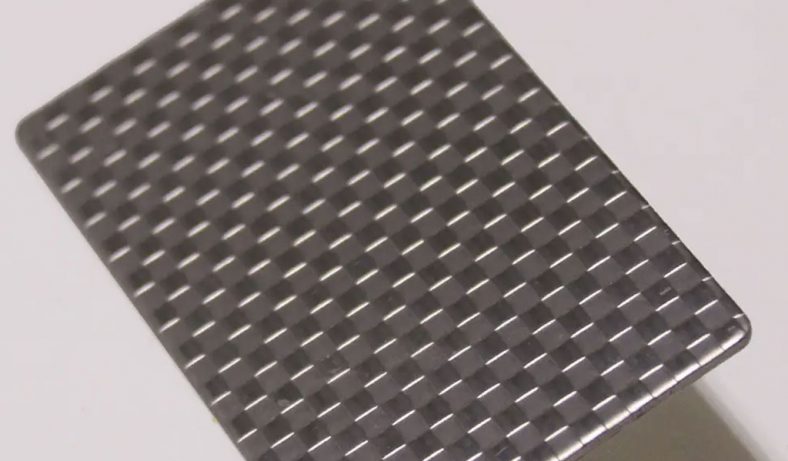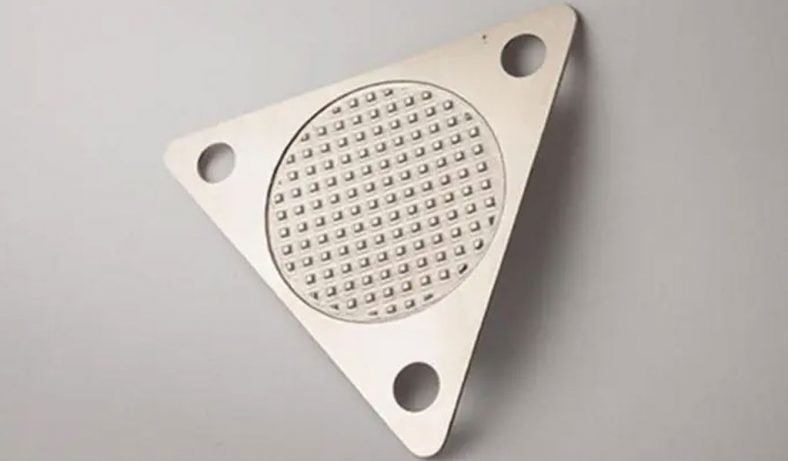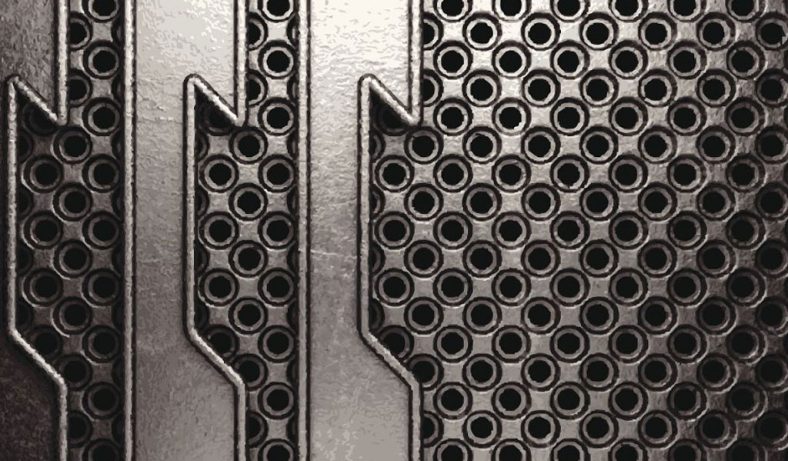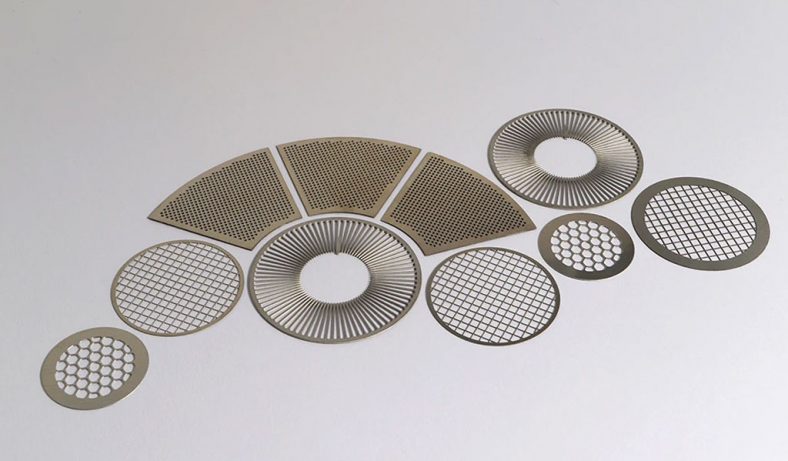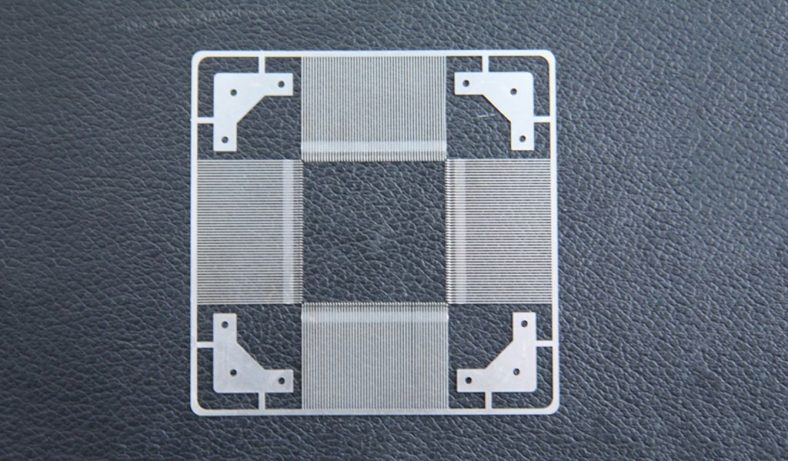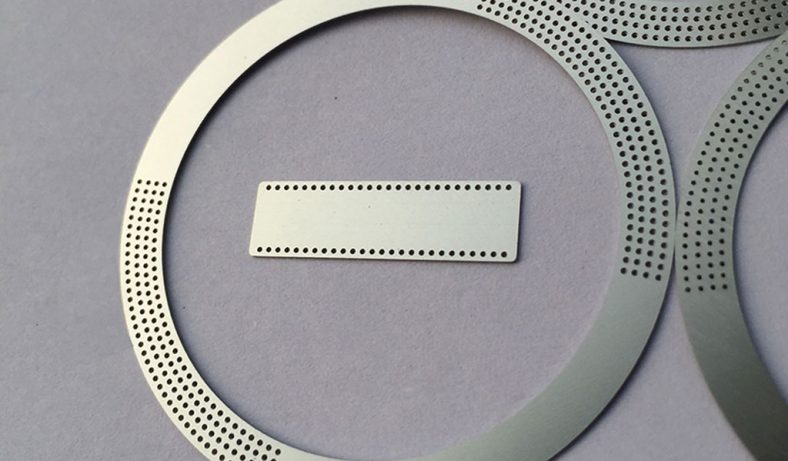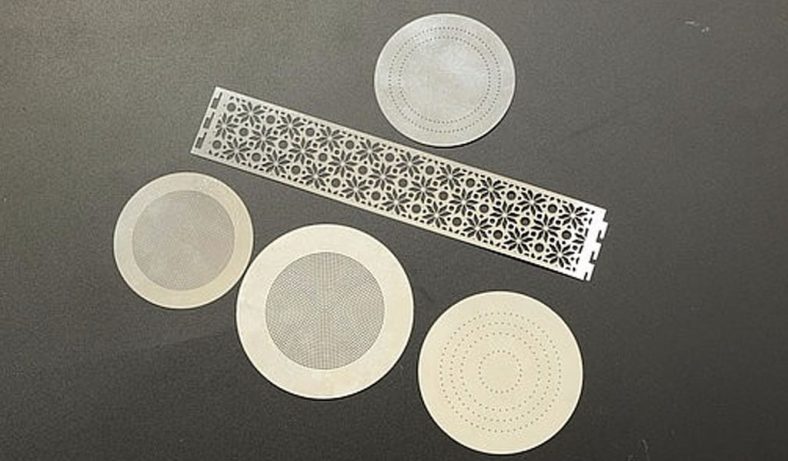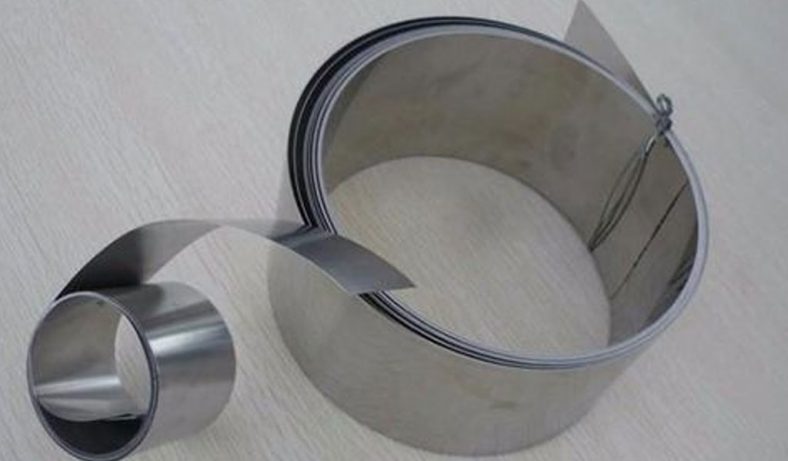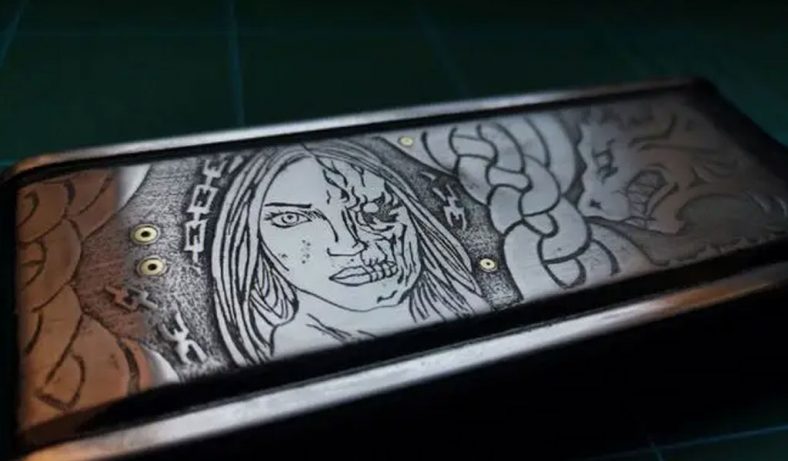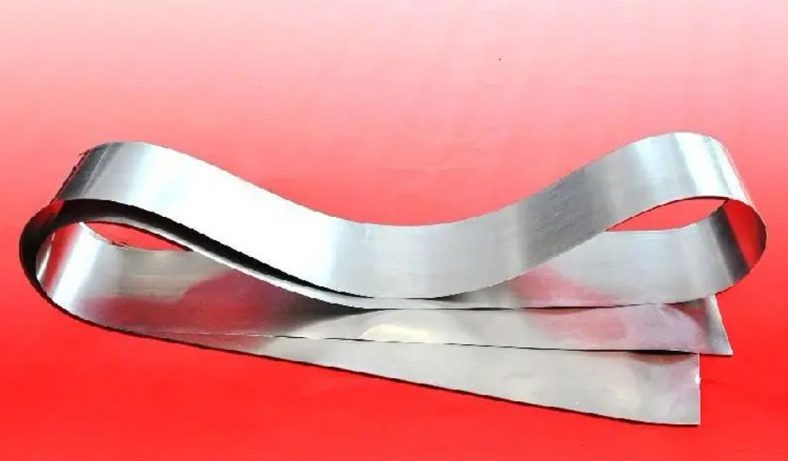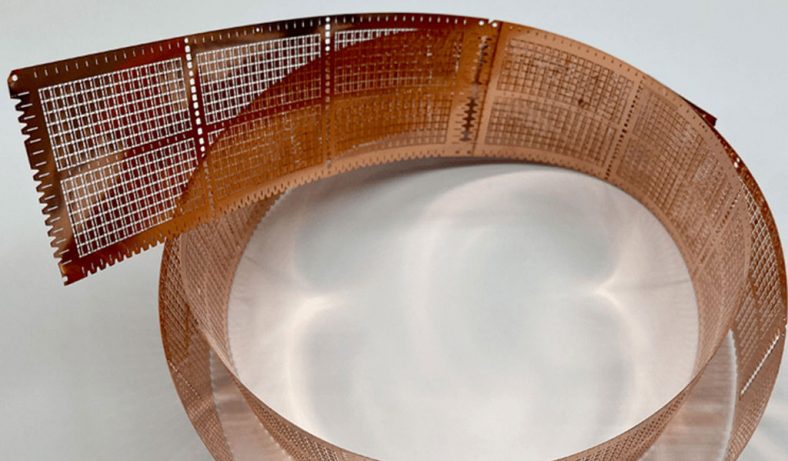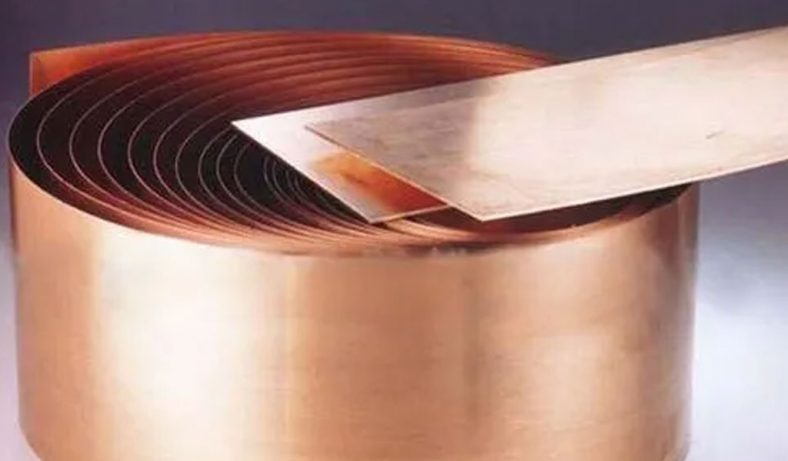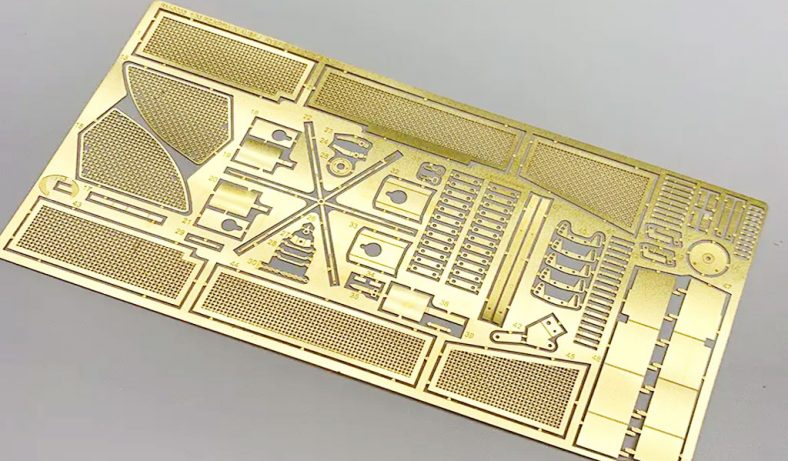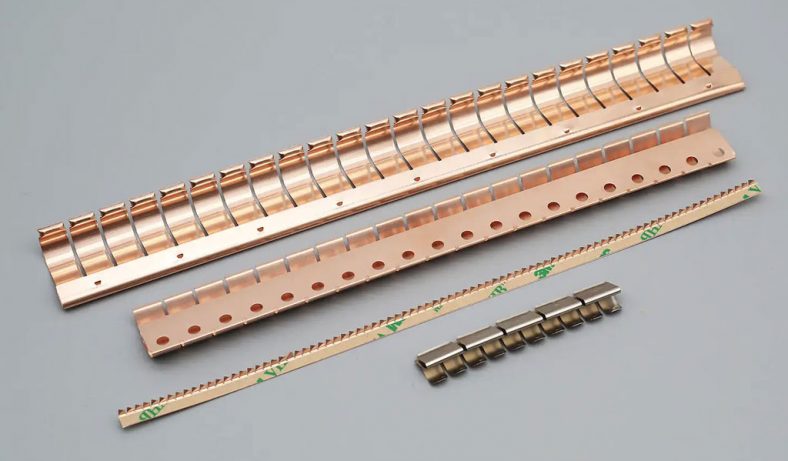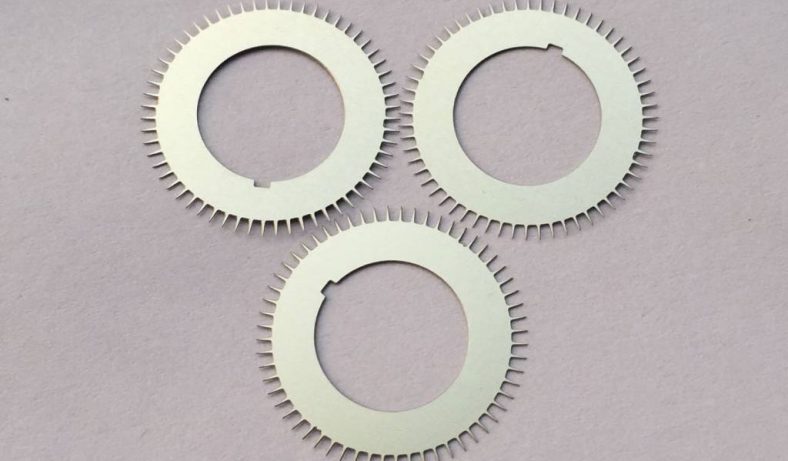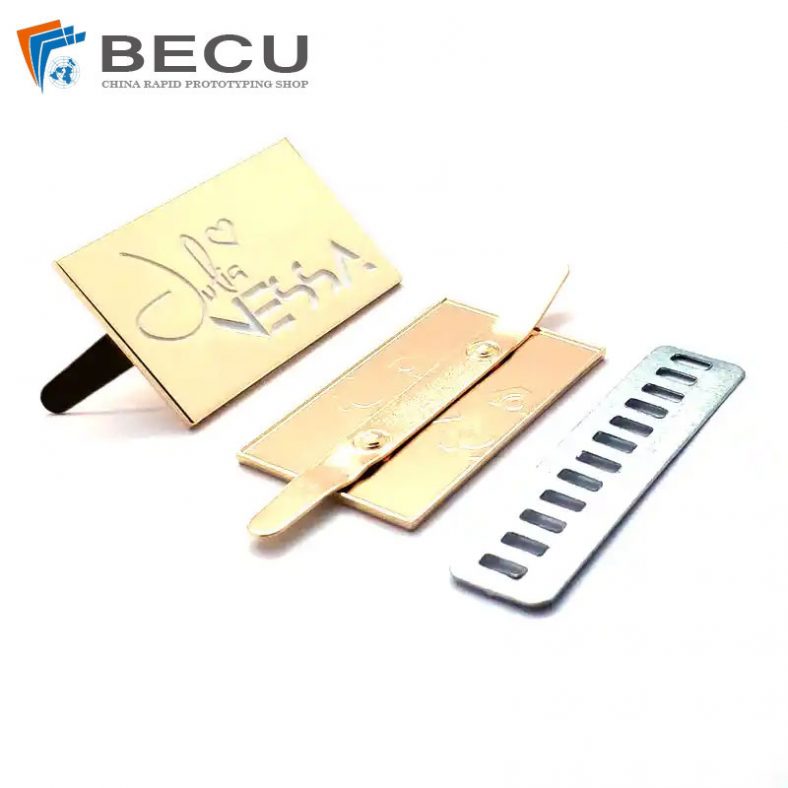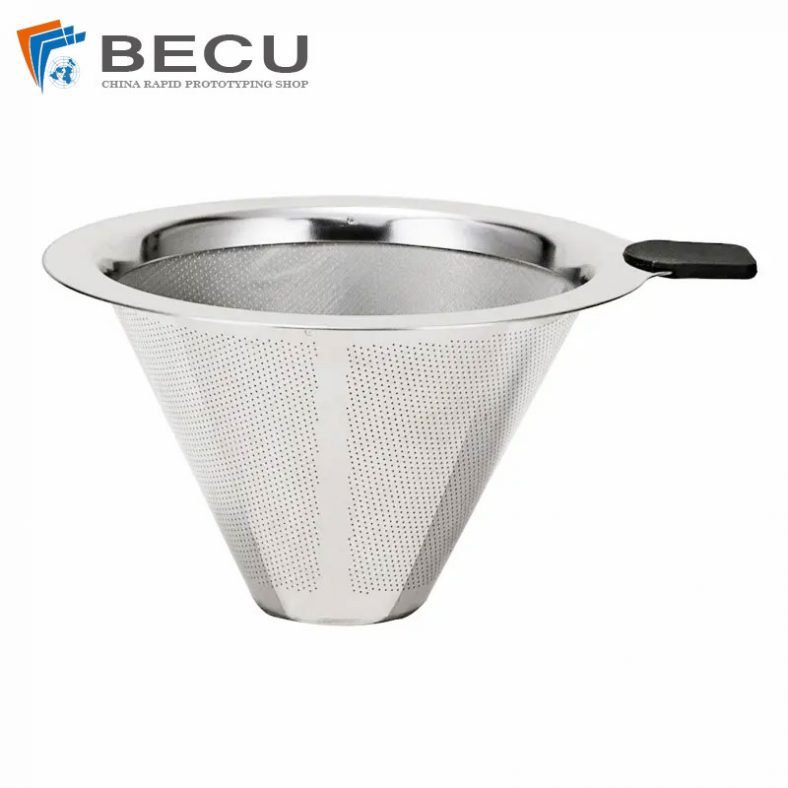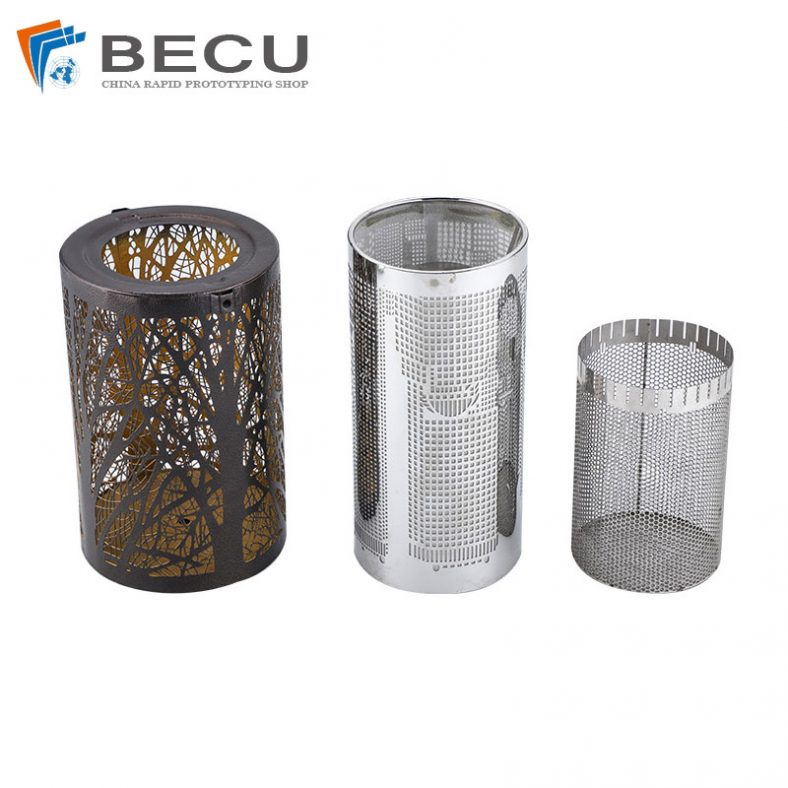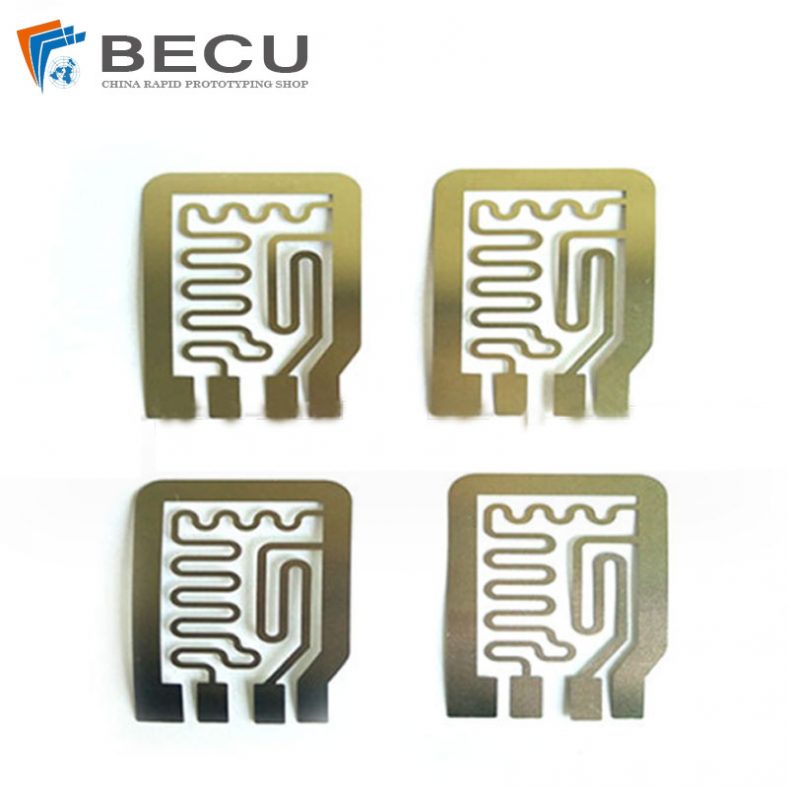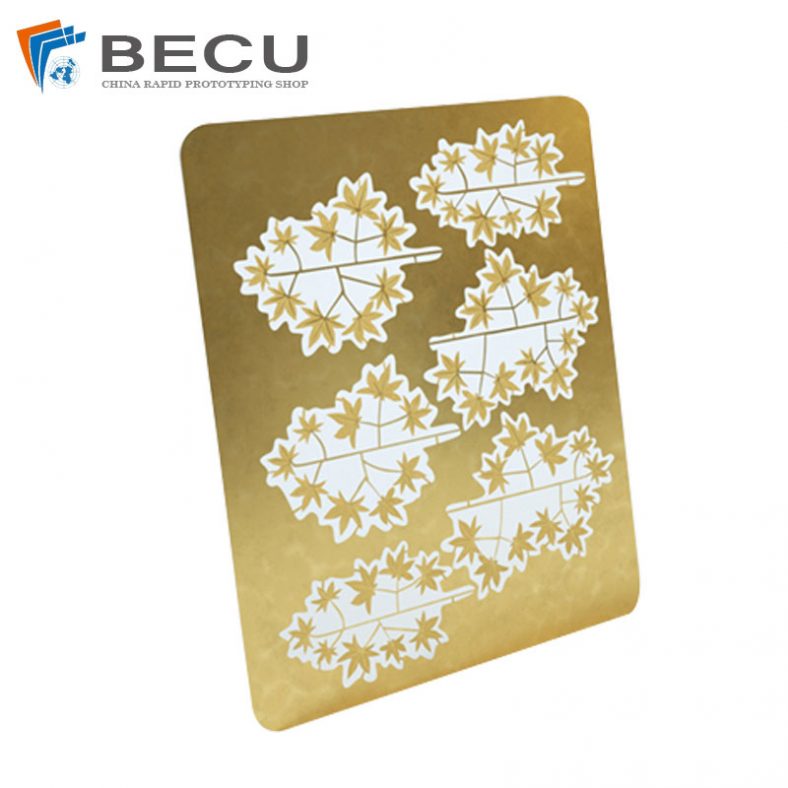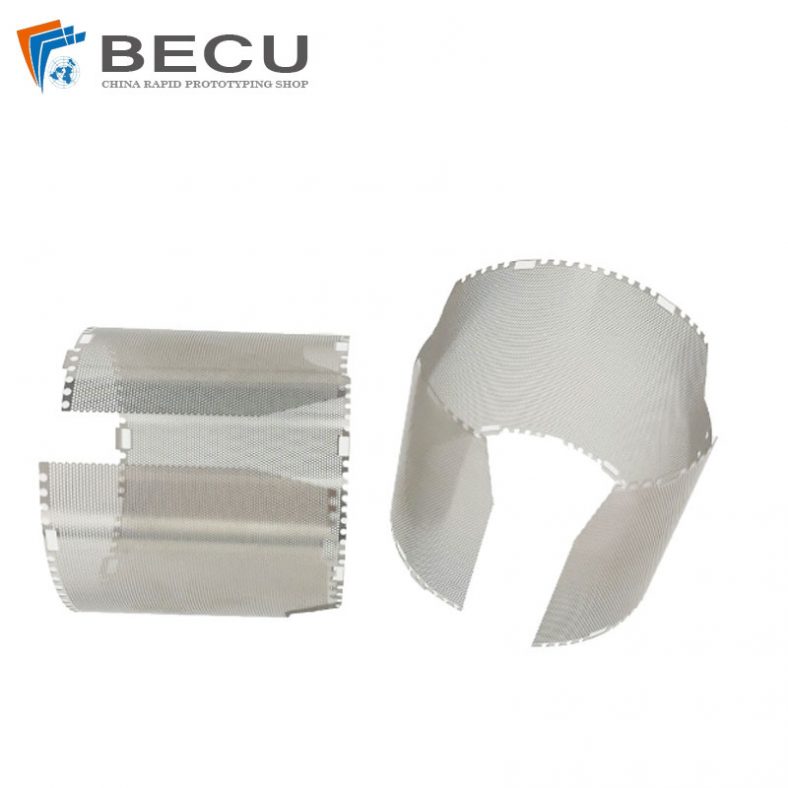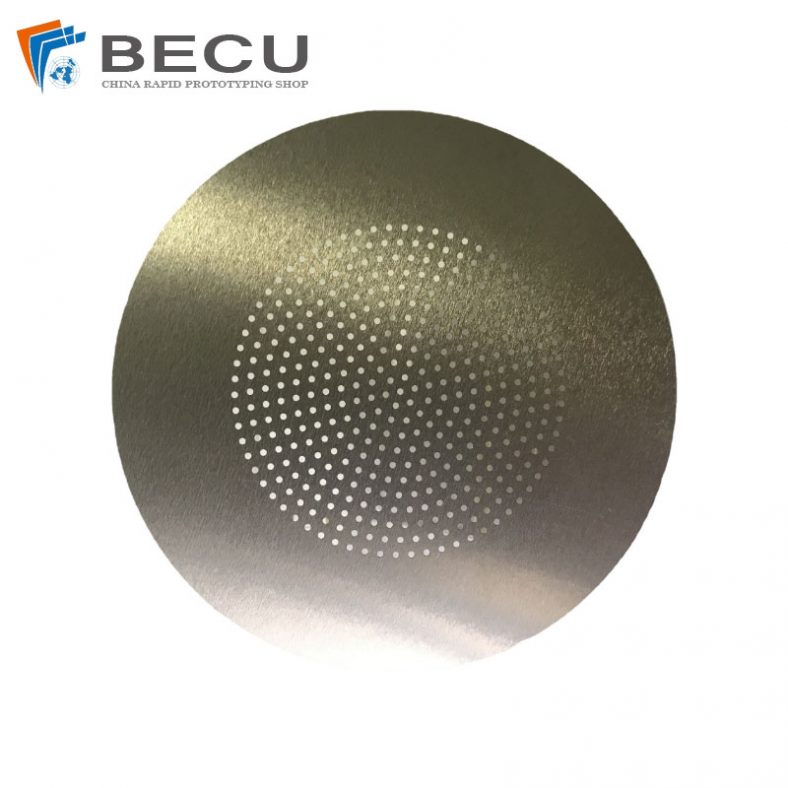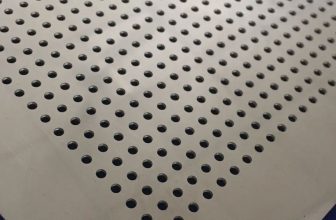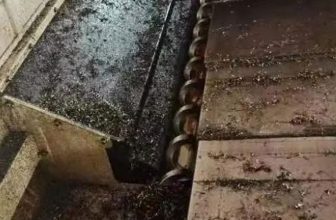Reactive ion etching (RIE) is a cornerstone technology in microfabrication, enabling the precise patterning of materials at micro- and nanoscale dimensions. Among its applications, the processing of micro-holes in copper-based materials has garnered significant attention due to copper’s widespread use in integrated circuits (ICs), microelectromechanical systems (MEMS), and advanced packaging technologies. Copper’s excellent electrical conductivity, thermal properties, and compatibility with semiconductor processes make it a material of choice for interconnects, through-silicon vias (TSVs), and other high-performance microstructures. However, its chemical inertness and tendency to form non-volatile etch byproducts pose unique challenges for RIE, necessitating innovative approaches to achieve high-aspect-ratio (HAR) micro-holes with smooth sidewalls, high etch rates, and minimal substrate damage.
This article comprehensively reviews the recent advancements in RIE for micro-hole processing of copper-based materials, focusing on plasma chemistries, equipment innovations, mask materials, and process optimizations. It explores the evolution from traditional RIE to advanced techniques such as inductively coupled plasma (ICP) RIE and deep reactive ion etching (DRIE), highlighting their impact on achieving high-precision micro-holes. The article also addresses challenges such as etch anisotropy, selectivity, and surface quality, providing detailed comparisons through tables and discussing emerging trends in cryogenic etching, pulsed plasma processes, and alternative masking strategies. By synthesizing findings from recent literature and industry developments, this work aims to serve as a definitive resource for researchers, engineers, and technologists in microfabrication.
Fundamentals of Reactive Ion Etching
Principles of RIE
Reactive ion etching is a dry etching technique that combines physical sputtering with chemical reactions to remove material from a substrate. In a typical RIE system, a low-pressure plasma is generated by applying a radio frequency (RF) electromagnetic field to a gas mixture within a vacuum chamber. The plasma contains reactive ions, neutral radicals, and electrons, which interact with the substrate surface. Ions accelerated toward the substrate by an electric field bombard the surface, dislodging atoms (physical etching), while reactive species form volatile byproducts with the substrate material (chemical etching). This synergy enables anisotropic etching, where material removal is predominantly vertical, resulting in well-defined features.
For copper-based materials, the challenge lies in selecting a plasma chemistry that forms volatile copper compounds. Unlike silicon, which readily forms volatile fluorides (e.g., SiF₄) with fluorine-based plasmas, copper’s etch byproducts, such as copper chlorides or fluorides, have low volatility at room temperature. This necessitates specialized gas mixtures and process conditions to enhance etch efficiency and anisotropy.
Copper-Based Materials in Microfabrication
Copper-based materials encompass pure copper, copper alloys (e.g., Cu-Al, Cu-Si), and copper-containing compounds used in microelectronics and MEMS. Pure copper is prized for its low resistivity (1.68 µΩ·cm at 20°C), making it ideal for interconnects and TSVs in 3D ICs. Copper alloys, such as those with aluminum or silicon, are used to mitigate electromigration and improve mechanical stability. In MEMS, copper-based materials are employed in sensors, actuators, and microfluidic devices due to their thermal and electrical properties.
Micro-hole processing in copper-based materials is critical for applications such as TSVs, which enable vertical interconnects in 3D ICs, and micro-vias in printed circuit boards (PCBs). These structures require high-aspect-ratio holes (depth-to-diameter ratios often exceeding 10:1) with smooth sidewalls to ensure reliable electrical performance and structural integrity. RIE’s ability to achieve anisotropic etching makes it a preferred method over wet etching, which is isotropic and leads to undercutting, or laser drilling, which may cause thermal damage.
Challenges in Etching Copper-Based Materials
Etching copper-based materials presents several challenges:
- Low Volatility of Etch Byproducts: Copper forms non-volatile compounds (e.g., CuCl₂, CuF₂) in standard halogen-based plasmas, leading to redeposition and rough surfaces.
- Anisotropy: Achieving vertical sidewalls in high-aspect-ratio micro-holes requires precise control of ion directionality and passivation.
- Selectivity: The etch process must preserve the masking material and underlying substrate while removing copper efficiently.
- Surface Quality: Copper’s tendency to oxidize or form residues can degrade surface smoothness, impacting device performance.
- Equipment Compatibility: Copper etching often requires specialized chambers to prevent contamination, as copper residues can affect subsequent processes.
Recent advancements have addressed these challenges through novel plasma chemistries, advanced RIE systems, and optimized process parameters, as discussed in the following sections.
Evolution of RIE Techniques for Copper Etching
Traditional RIE Approaches
Early RIE processes for copper relied on chlorine-based plasmas (e.g., Cl₂, BCl₃) due to their ability to form copper chlorides. However, these processes suffered from low etch rates (typically <0.5 µm/min) and poor anisotropy due to the low volatility of CuCl₂ at room temperature. Heating the substrate to 200–300°C was often required to volatilize byproducts, but this introduced thermal stress and compatibility issues with other materials in the stack.
Alternative chemistries, such as fluorine-based plasmas (e.g., CF₄, SF₆), were explored but proved ineffective, as copper fluorides (CuF₂) are even less volatile. Oxygen or argon additions were used to enhance sputtering, but these increased substrate damage and reduced selectivity. Traditional RIE systems, typically parallel-plate reactors, also struggled to achieve high plasma densities, limiting etch rates and aspect ratios.
Inductively Coupled Plasma (ICP) RIE
The introduction of inductively coupled plasma (ICP) RIE in the 1990s marked a significant advancement. ICP-RIE systems use a separate RF coil to generate a high-density plasma, decoupling plasma generation from substrate bias. This allows independent control of ion energy and plasma density, improving etch rate, anisotropy, and selectivity. For copper etching, ICP-RIE has enabled the use of novel gas mixtures, such as organic chelators, to enhance byproduct volatility.
A notable study demonstrated ICP-RIE of copper thin films using an ethylenediamine (EDA)/butanol/Ar plasma. Ethylenediamine, an organic chelator, forms volatile copper complexes, while butanol enhances etch anisotropy by passivating sidewalls. The process achieved an etch rate of 0.8 µm/min and a selectivity of 10:1 to SiO₂ masks, with nearly vertical sidewalls (89° ± 1°). Optical emission spectroscopy (OES) and X-ray photoelectron spectroscopy (XPS) confirmed the formation of copper-EDA complexes, elucidating the etch mechanism.
Deep Reactive Ion Etching (DRIE)
Deep reactive ion etching, originally developed for silicon micromachining, has been adapted for copper-based materials to achieve high-aspect-ratio micro-holes. DRIE typically employs the Bosch process, which alternates etching (e.g., SF₆ plasma) and passivation (e.g., C₄F₈ plasma) cycles to maintain vertical sidewalls. For copper, the Bosch process is less effective due to the lack of suitable passivation gases, but modified DRIE approaches using organic plasmas have shown promise.
A 2023 study reported DRIE of copper using a CH₃COOH/Ar plasma, achieving micro-holes with aspect ratios up to 15:1. The process leveraged acetic acid’s ability to form volatile copper acetate complexes, combined with argon sputtering to enhance anisotropy. The etch rate reached 1.2 µm/min, with a selectivity of 12:1 to SiO₂ masks. The study highlighted the importance of optimizing ICP power (500–1000 W) and bias voltage (100–300 V) to balance etch rate and profile control.
Cryogenic RIE
Cryogenic RIE, conducted at substrate temperatures below -100°C, has emerged as a promising technique for high-aspect-ratio etching. By cooling the substrate, cryogenic RIE enhances the condensation of passivation layers, reducing sidewall etching and improving anisotropy. For copper, cryogenic RIE has been explored with chlorine-based plasmas, where low temperatures increase the volatility of CuCl₂ by altering surface reaction kinetics.
A 2024 study demonstrated cryogenic ICP-RIE of copper using a Cl₂/O₂ plasma at -120°C, achieving micro-holes with aspect ratios of 20:1. The process yielded an etch rate of 1.5 µm/min and a selectivity of 15:1 to nickel masks. Scanning electron microscopy (SEM) images revealed smooth sidewalls with minimal scalloping, attributed to the formation of a thin oxide passivation layer. The study underscored the need for precise temperature control to prevent mask erosion.
Pulsed Plasma Etching
Pulsed plasma etching, where the RF power is modulated in short bursts, offers improved control over ion energy and radical flux. This technique reduces plasma-induced damage and enhances selectivity by allowing time for byproduct desorption. For copper, pulsed ICP-RIE has been used with Cl₂/Ar plasmas to achieve micro-holes with aspect ratios up to 18:1. A 2025 study reported an etch rate of 1.3 µm/min and a selectivity of 14:1 to Cr masks, with reduced surface roughness compared to continuous plasma processes.
Plasma Chemistries for Copper Etching
Chlorine-Based Plasmas
Chlorine-based plasmas remain the most widely used for copper etching due to their ability to form copper chlorides. Common gases include Cl₂, BCl₃, and HCl, often combined with Ar or O₂ to enhance sputtering or passivation. A key challenge is the low volatility of CuCl₂, which requires elevated temperatures or high ion energies. Recent advancements have focused on optimizing gas ratios and plasma parameters to improve etch efficiency.
A 2022 study compared Cl₂/Ar and BCl₃/Ar plasmas for copper micro-hole etching. The Cl₂/Ar plasma achieved an etch rate of 0.9 µm/min and an aspect ratio of 12:1, while BCl₃/Ar yielded a lower etch rate (0.6 µm/min) but higher selectivity (15:1 vs. 10:1) due to reduced mask erosion. SEM analysis showed smoother sidewalls with Cl₂/Ar, attributed to higher ion directionality.
Organic Chelator Plasmas
Organic chelators, such as ethylenediamine (EDA) and acetic acid (CH₃COOH), have revolutionized copper etching by forming volatile complexes. These plasmas are typically used in ICP-RIE systems, with additives like butanol or argon to enhance anisotropy. The EDA/butanol/Ar plasma, for instance, has demonstrated etch rates up to 0.8 µm/min and aspect ratios of 10:1, with minimal redeposition.
Acetic acid-based plasmas have shown higher etch rates (1.2 µm/min) and aspect ratios (15:1) due to the formation of copper acetate complexes. A 2023 study optimized the CH₃COOH/Ar ratio, finding that a 20% acetic acid concentration maximized etch rate while maintaining vertical sidewalls. XPS analysis confirmed the absence of chlorine residues, improving compatibility with subsequent processes.
Fluorine-Based Plasmas with Additives
Fluorine-based plasmas (e.g., SF₆, CF₄) are generally ineffective for copper due to the non-volatile nature of CuF₂. However, adding helium or oxygen can enhance etch characteristics. A 2021 study explored a He/SF₆/BCl₃ plasma for copper etching, achieving a selectivity of 150:1 to AlGaAs substrates. The helium ions enhanced the dissociation of SF₆ into reactive fluorine species, while BCl₃ facilitated chloride formation. The process was limited to shallow etches (<5 µm) but showed promise for hybrid material systems.
Comparison of Plasma Chemistries
The following table compares key plasma chemistries for copper micro-hole etching based on recent studies:
| Plasma Chemistry | Etch Rate (µm/min) | Aspect Ratio | Selectivity (to SiO₂) | Sidewall Angle (°) | Key Advantages | Limitations | Reference |
|---|---|---|---|---|---|---|---|
| Cl₂/Ar | 0.9 | 12:1 | 10:1 | 89 ± 1 | High anisotropy, smooth sidewalls | Low etch rate, requires heating | |
| BCl₃/Ar | 0.6 | 10:1 | 15:1 | 88 ± 2 | High selectivity | Slow etch rate, rougher surfaces | |
| EDA/Butanol/Ar | 0.8 | 10:1 | 10:1 | 89 ± 1 | Volatile byproducts, clean surfaces | Complex gas handling | |
| CH₃COOH/Ar | 1.2 | 15:1 | 12:1 | 90 ± 1 | High etch rate, high aspect ratio | Limited mask compatibility | |
| He/SF₆/BCl₃ | 0.7 | 8:1 | 150:1 (to AlGaAs) | 87 ± 2 | Ultra-high selectivity | Shallow etches only | |
| Cl₂/O₂ (Cryogenic) | 1.5 | 20:1 | 15:1 (to Ni) | 90 ± 0.5 | High aspect ratio, smooth sidewalls | Requires cryogenic equipment |
Mask Materials and Selectivity
Common Mask Materials
The choice of mask material is critical in RIE, as it must withstand plasma exposure while maintaining pattern fidelity. Common masks for copper etching include:
- SiO₂: Widely used due to its compatibility with semiconductor processes. However, selectivity is moderate (10–12:1), and prolonged etching can lead to mask erosion.
- Nickel (Ni): Offers higher selectivity (15–25:1) but requires specialized deposition and patterning processes.
- Copper (Cu): Used as a hard mask for SiC etching, with selectivities up to 163:1, but less common for copper etching due to self-etching risks.
- Chromium (Cr): Provides high selectivity (15:1) and durability, ideal for deep etches.
- Photoresist (e.g., KMPR): Suitable for shallow etches but erodes quickly in high-power plasmas.
Selectivity Optimization
Selectivity is defined as the ratio of the etch rate of the target material (copper) to that of the mask. High selectivity allows thinner masks, improving dimensional control. Recent studies have explored alternative masks to replace copper, which, while effective, poses contamination risks. A 2022 study demonstrated that Cr masks achieved a selectivity of 15:1 in CH₃COOH/Ar plasma, outperforming SiO₂ (12:1) and photoresist (5:1).
Nickel masks have shown promise in cryogenic RIE, with selectivities up to 25:1 in Cl₂/O₂ plasmas. The high selectivity is attributed to nickel’s resistance to chlorine-based plasmas at low temperatures. However, nickel’s deposition and removal processes are complex, limiting its adoption.
Comparison of Mask Materials
The following table compares mask materials for copper micro-hole etching:
| Mask Material | Selectivity (to Cu) | Deposition Method | Patterning Method | Advantages | Limitations | Reference |
|---|---|---|---|---|---|---|
| SiO₂ | 10–12:1 | PECVD | Photolithography, RIE | Process compatibility | Moderate selectivity | , |
| Nickel | 15–25:1 | Electroplating | Photolithography, Etching | High selectivity | Complex processing | |
| Copper | 163:1 (for SiC) | Evaporation | Ion-beam milling | Ultra-high selectivity | Contamination risk | |
| Chromium | 15:1 | Sputtering | Photolithography, Etching | Durable, high selectivity | Limited availability | |
| KMPR Photoresist | 5:1 | Spin coating | Photolithography | Easy patterning | Low durability |
Equipment Innovations
Advanced RIE Systems
Modern RIE systems, such as ICP-RIE and DRIE reactors, have significantly improved copper etching capabilities. Key innovations include:
- Dual RF Generators: ICP-RIE systems use separate RF sources for plasma generation and substrate bias, allowing precise control of ion energy and plasma density. This is critical for high-aspect-ratio micro-holes, where uniform ion flux is needed.
- Cryogenic Stages: Cryogenic RIE systems incorporate liquid nitrogen-cooled stages to maintain substrate temperatures below -100°C, enhancing passivation and anisotropy.
- Pulsed Plasma Sources: Pulsed RF systems modulate plasma power to reduce damage and improve selectivity. A 2025 study reported a 20% increase in selectivity with pulsed ICP-RIE compared to continuous plasma.
- Burst Wave Plasma: High-frequency burst wave ICP systems (e.g., 150 kHz) increase etch rates by enhancing radical generation. A 2021 study achieved a 30% higher etch rate for silicon using burst waves, with potential applications for copper.
Chamber Design and Contamination Control
Copper etching requires specialized chambers to prevent cross-contamination, as copper residues can degrade subsequent processes. Modern RIE systems incorporate:
- Dedicated Copper Chambers: Separate chambers for copper etching reduce contamination risks.
- Advanced Cleaning Protocols: Plasma cleaning with O₂ or Ar removes copper residues, ensuring chamber compatibility with silicon or dielectric etching.
- High-Purity Gas Delivery: Ultra-pure gas lines minimize contamination from residual gases, improving etch reproducibility.
Process Optimization for Micro-Hole Etching
Parameter Optimization
Optimizing RIE parameters is critical for achieving high-aspect-ratio micro-holes. Key parameters include:
- ICP Power: Higher ICP power (500–1000 W) increases plasma density, enhancing etch rate but risking mask erosion. A 2023 study found 800 W optimal for CH₃COOH/Ar plasma, balancing rate and selectivity.
- Bias Voltage: Higher bias voltage (100–300 V) improves ion directionality, reducing sidewall bowing. A 2022 study reported minimal bowing at 200 V for Cl₂/Ar plasma.
- Gas Flow Rates: Precise control of gas ratios (e.g., 20% CH₃COOH in Ar) maximizes etch rate and anisotropy.
- Pressure: Lower pressure (5–10 mTorr) enhances ion directionality, while higher pressure (20–50 mTorr) increases etch rate but reduces anisotropy.
- Temperature: Cryogenic temperatures (-100 to -120°C) improve anisotropy, while elevated temperatures (200–300°C) enhance byproduct volatility in chlorine-based plasmas.
Etch Profile Control
Achieving vertical sidewalls and minimal undercut is critical for micro-hole functionality. Recent strategies include:
- Passivation Layers: Organic plasmas (e.g., CH₃COOH) form polymer-like passivation layers, reducing sidewall etching.
- Cyclic Etching: Modified Bosch-like processes alternate etching and passivation cycles to maintain vertical profiles. A 2024 study achieved aspect ratios of 18:1 using cyclic Cl₂/O₂ etching.
- Aspect Ratio-Dependent Etching (ARDE): ARDE, where etch rate decreases with increasing aspect ratio, is mitigated by optimizing bias voltage and gas flow. A 2022 study reduced ARDE by 15% using pulsed plasma.
Comparison of Process Parameters
The following table compares optimized parameters for copper micro-hole etching:
| Parameter | Cl₂/Ar Plasma | CH₃COOH/Ar Plasma | Cl₂/O₂ (Cryogenic) | EDA/Butanol/Ar | Reference |
|---|---|---|---|---|---|
| ICP Power (W) | 600 | 800 | 700 | 500 | ,,, |
| Bias Voltage (V) | 150 | 200 | 250 | 100 | ,,, |
| Pressure (mTorr) | 10 | 15 | 5 | 20 | ,,, |
| Gas Ratio | 70% Cl₂ | 20% CH₃COOH | 80% Cl₂ | 30% EDA | ,,, |
| Temperature (°C) | 200 | 25 | -120 | 50 | ,,, |
| Etch Rate (µm/min) | 0.9 | 1.2 | 1.5 | 0.8 | ,,, |
| Aspect Ratio | 12:1 | 15:1 | 20:1 | 10:1 | ,,, |
Applications of Micro-Hole Processing in Copper-Based Materials
Through-Silicon Vias (TSVs)
TSVs are vertical interconnects that enable 3D ICs, improving performance and reducing power consumption. Copper-filled TSVs require high-aspect-ratio micro-holes (typically 5–20 µm in diameter, 50–100 µm deep) with smooth sidewalls to ensure reliable filling and electrical performance. ICP-RIE and DRIE have become standard for TSV etching, with CH₃COOH/Ar plasmas achieving aspect ratios up to 15:1 and etch rates of 1.2 µm/min.
A 2023 study demonstrated TSVs with 10 µm diameter and 100 µm depth using cryogenic Cl₂/O₂ plasma, achieving a sidewall roughness of <50 nm. The process was integrated with copper electroplating, yielding TSVs with <5% resistance variation.
Micro-Vias in PCBs
Micro-vias in high-density interconnect (HDI) PCBs require precise etching of copper layers to form electrical connections. RIE’s ability to achieve anisotropic profiles ensures accurate via dimensions, critical for signal integrity. A 2022 study used Cl₂/Ar plasma to etch 20 µm micro-vias in copper-clad laminates, achieving aspect ratios of 8:1 and selectivities of 10:1 to SiO₂ masks.
MEMS Devices
In MEMS, copper micro-holes are used in sensors, actuators, and microfluidic channels. High-aspect-ratio holes enhance device performance by increasing surface area or enabling fluid flow. A 2024 study reported copper microfluidic channels etched with EDA/butanol/Ar plasma, achieving 50 µm deep holes with aspect ratios of 10:1. The smooth sidewalls (<100 nm roughness) improved fluid dynamics in lab-on-chip devices.
Comparison of Applications
The following table compares micro-hole etching requirements for different applications:
| Application | Hole Diameter (µm) | Depth (µm) | Aspect Ratio | Key Requirements | Preferred Plasma | Reference |
|---|---|---|---|---|---|---|
| TSVs | 5–20 | 50–100 | 10–20:1 | Smooth sidewalls, high anisotropy | CH₃COOH/Ar, Cl₂/O₂ | , |
| Micro-Vias (PCBs) | 10–50 | 20–50 | 5–10:1 | High selectivity, precise dimensions | Cl₂/Ar | |
| MEMS Channels | 20–100 | 20–100 | 5–15:1 | Low roughness, biocompatibility | EDA/Butanol/Ar |
Challenges and Future Directions
Current Challenges
Despite significant progress, several challenges remain:
- Byproduct Volatility: Developing plasmas that consistently form volatile copper compounds without requiring high temperatures or complex additives.
- High-Aspect-Ratio Limitations: Aspect ratios beyond 20:1 are difficult due to ion scattering and radical diffusion limitations.
- Mask Durability: Finding masks with ultra-high selectivity (>50:1) that are easy to deposit and remove.
- Surface Damage: Minimizing plasma-induced damage to underlying substrates, especially in hybrid material systems.
- Scalability: Ensuring process uniformity across large wafers (e.g., 300 mm) for high-volume manufacturing.
Emerging Trends
Several trends are shaping the future of copper micro-hole etching:
- Atomic Layer Etching (ALE): ALE offers atomic-scale precision by alternating self-limiting etching and passivation steps. A 2023 study demonstrated ALE of copper using Cl₂-based cycles, achieving sub-10 nm features with <5 nm roughness.
- Hybrid Etching Techniques: Combining RIE with wet etching or laser ablation to enhance etch rates while maintaining anisotropy. A 2024 study used laser pre-etching followed by ICP-RIE to achieve 25:1 aspect ratios.
- AI-Driven Optimization: Machine learning is being used to optimize RIE parameters, reducing trial-and-error. A 2025 study reported a 30% improvement in etch uniformity using AI-driven gas flow control.
- Sustainable Chemistries: Replacing hazardous gases (e.g., Cl₂) with environmentally friendly alternatives, such as organic chelators, to meet regulatory requirements.
Future Research Directions
Future research should focus on:
- Developing novel plasma chemistries with higher volatility and selectivity.
- Enhancing cryogenic RIE for ultra-high-aspect-ratio (>30:1) micro-holes.
- Integrating in-situ diagnostics (e.g., OES, mass spectrometry) for real-time process control.
- Exploring 2D materials (e.g., graphene) as etch masks for improved selectivity and durability.
- Scaling RIE processes for next-generation 3D ICs and flexible electronics.
Conclusion
Reactive ion etching has undergone transformative advancements in the micro-hole processing of copper-based materials, driven by innovations in plasma chemistries, equipment, and process optimization. Techniques such as ICP-RIE, DRIE, cryogenic RIE, and pulsed plasma etching have enabled high-aspect-ratio micro-holes with unprecedented precision, supporting applications in TSVs, micro-vias, and MEMS. Organic chelators like ethylenediamine and acetic acid have addressed the challenge of non-volatile byproducts, while advanced masks and cryogenic processes have improved selectivity and anisotropy. Despite challenges such as high-aspect-ratio limitations and surface damage, emerging trends like ALE, hybrid etching, and AI-driven optimization promise to further enhance RIE capabilities.
This article has provided a comprehensive overview of the field, supported by detailed comparisons of plasma chemistries, mask materials, process parameters, and applications. As the semiconductor industry continues to push for smaller, more complex devices, RIE will remain a critical technology, with ongoing research poised to unlock new possibilities in copper-based microfabrication.

